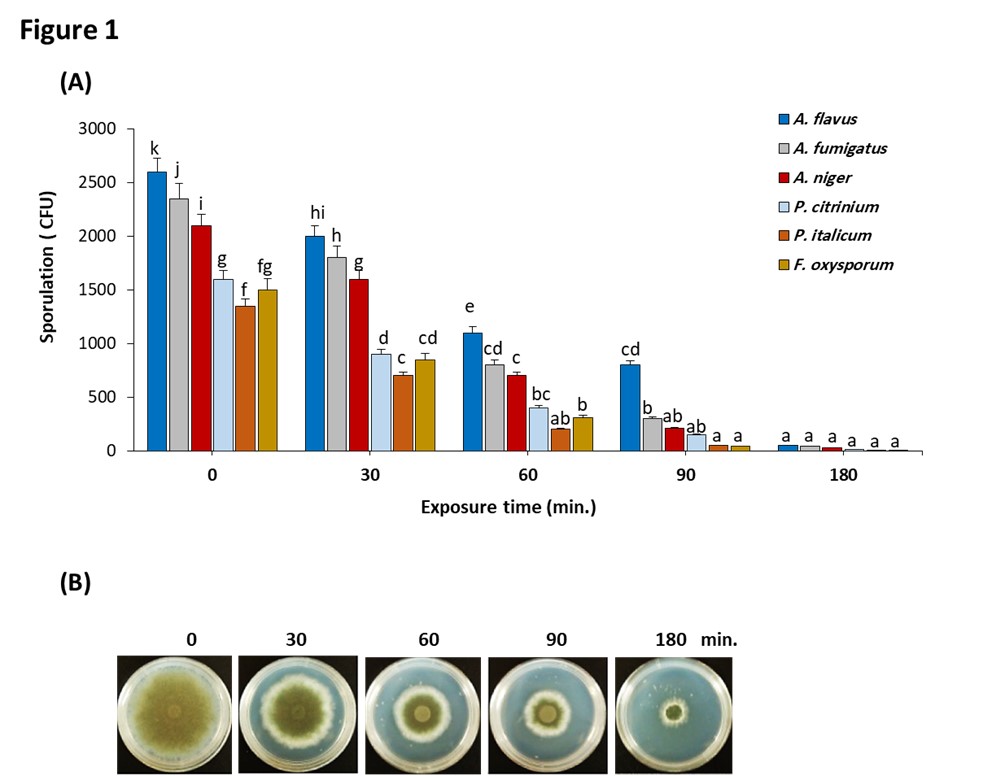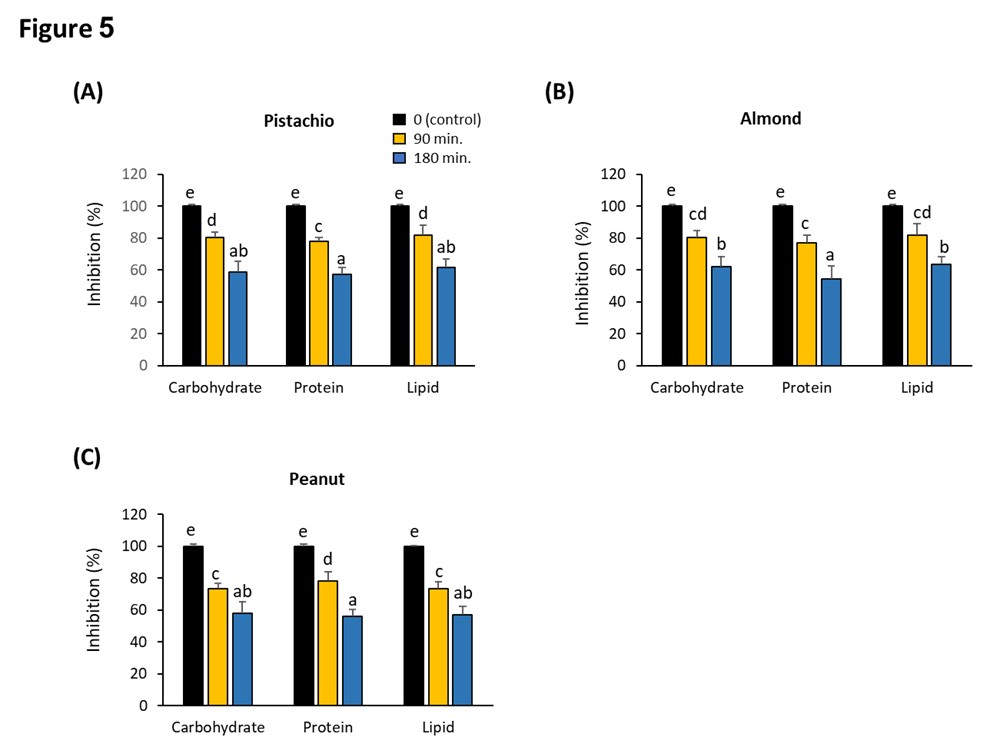Abstract
Ozone gas is considered as a safe antimicrobial agent in food industries. Here, we evaluated the antifungal and antiaflatoxigenic activities of ozone against fungal contamination in nuts. The most predominant fungal genera in nuts were Aspergillus, Penicillium, Fusarium, and Rhizopus. Ozone (4 ppm) significantly reduced the fungal sporulation of A. flavus and their aflatoxin production. Interestingly, ozone treatment of nuts reduced the total fungal count and increased aflatoxins degradation by approximately 95% and 85%, respectively. Ozone displayed high efficiency to increase the permeability of cell membrane and injury of cell wall of fungi. Increasing the exposure time of ozone in nuts up to 180 minutes showed to reduce the total lipid, carbohydrates, and protein by around 41.2%, 42.7% and 38.4% respectively, in pistachio, almond and peanuts. In conclusion, ozonation is a suitable decontaminating approach for reducing the microbial load in nuts, when used with suitable exposure time.
Keywords:
Aspergillus; aflatoxins; antifungal; antiaflatoxigenic; ozone; nuts; nutritional quality

 Thumbnail
Thumbnail
 Thumbnail
Thumbnail
 Thumbnail
Thumbnail
 Thumbnail
Thumbnail
 Thumbnail
Thumbnail




